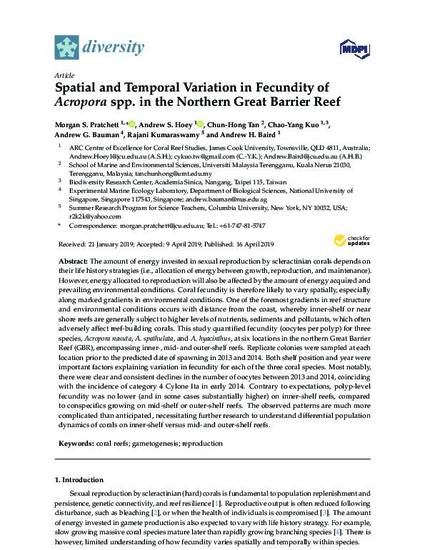
- Coral reefs,
- Gametogenesis,
- Reproduction
The amount of energy invested in sexual reproduction by scleractinian corals depends on their life history strategies (i.e., allocation of energy between growth, reproduction, and maintenance). However, energy allocated to reproduction will also be affected by the amount of energy acquired and prevailing environmental conditions. Coral fecundity is therefore likely to vary spatially, especially along marked gradients in environmental conditions. One of the foremost gradients in reef structure and environmental conditions occurs with distance from the coast, whereby inner-shelf or near shore reefs are generally subject to higher levels of nutrients, sediments and pollutants, which often adversely affect reef-building corals. This study quantified fecundity (oocytes per polyp) for three species, Acropora nasuta, A. spathulata, and A. hyacinthus, at six locations in the northern Great Barrier Reef (GBR), encompassing inner-, mid- and outer-shelf reefs. Replicate colonies were sampled at each location prior to the predicted date of spawning in 2013 and 2014. Both shelf position and year were important factors explaining variation in fecundity for each of the three coral species. Most notably, there were clear and consistent declines in the number of oocytes between 2013 and 2014, coinciding with the incidence of category 4 Cylone Ita in early 2014. Contrary to expectations, polyp-level fecundity was no lower (and in some cases substantially higher) on inner-shelf reefs, compared to conspecifics growing on mid-shelf or outer-shelf reefs. The observed patterns are much more complicated than anticipated, necessitating further research to understand differential population dynamics of corals on inner-shelf versus mid- and outer-shelf reefs.
Available at: http://works.bepress.com/andrew-bauman/49/
